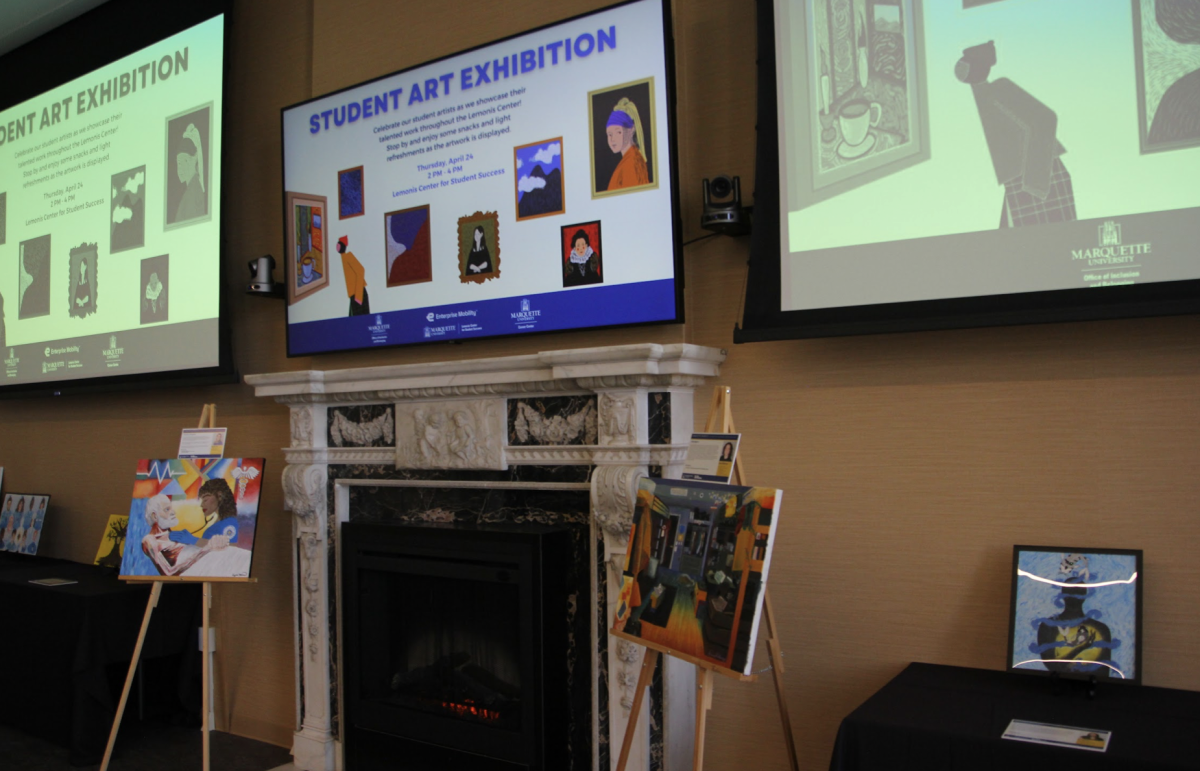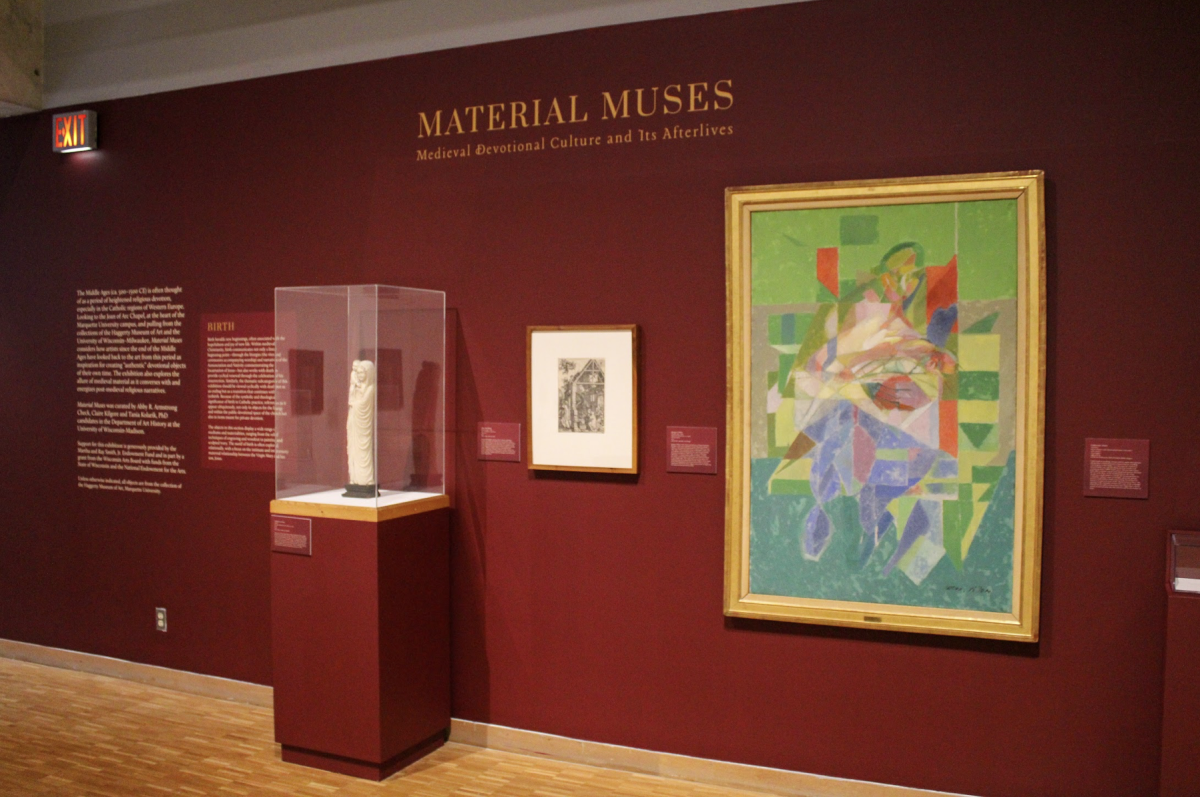 Back in the time when tattoos were the stuff of carnival shows, the arms of sailors and hearts that said “mom,” Amund Dietzel rocked some serious ink.
Back in the time when tattoos were the stuff of carnival shows, the arms of sailors and hearts that said “mom,” Amund Dietzel rocked some serious ink.
Dietzel quickly became Milwaukee’s premiere tattoo artist after arriving in the city in 1914. The Norse sailor ran his tattoo parlor for more than fifty years until the city banned tattoos in 1967 — a move almost as curmudgeonly as the town in “Footloose.”
Dietzel’s artwork helped develop the classic tattoo aesthetic. To picture his work, think tigers, koi fish and roses mixed in with visions of the sea and portraits of blushing femme fatales.
This past weekend I visited the Milwaukee Art Museum’s exhibit “Tattoo: Flash Art of Amund Dietzel,” a small, but fascinating collection of the artist’s work including pieces straight from Dietzel’s Milwaukee tattoo shop.
Now, I could go on about all the ways in which I discovered Dietzel is a grade-A bada**: He arrived on the continent as a shipwrecked Norwegian sailor, traveled carnivals as a tattooed man, and while not creating iconic tattoo art, painted watercolor landscapes in his spare time. Though his portrait displayed in the exhibit appears to be a prim, bespectacled man of the early 20th century, just a bit of tattoo creeps up his arm revealing Dietzel’s inner rebel.
But besides pondering all the ways in which Dietzel is cooler me, seeing Dietzel’s classic tattoo flash (patterns used for tattoos) in an art museum made a statement about the state of tattoos in the art world. Tattoos seem, at times, to hold a marginal place in art — rarely recognized in museums, and difficult, if not impossible, to preserve, sell or display in the traditional sense.
But to me tattoos are a unique in the way they feel like folk art and fine art all at once. Like folk art, tattoos can be an egalitarian expression, specific to a culture, time and place and tattoo artists are often not classically trained; although it does take rigorous practice and artistic skill to master the craft.
But like fine art, tattoos come from an evolving history of design that shifts with each era and can express larger aesthtic ideas. Looking at the artwork of Dietzel this weekend, I was amazed at how classic tattoo design still remains beautiful, yet also shows one step in an ever-changing art form.
Tattoo art has evolved from the designs found on ancient Egyptian bodies dated at 5,200 years old, to traditional henna tattoos in India and the Middle East used for weddings and other celebrations, the pin-up girls of Amund Dietzel, and even now to the Chinese character that you might be told means “serenity” but in fact means “toothpick.”
What sets tattoo art apart for me, though, is the intense personal connection it can hold. When you tattoo yourself you are saying, that yes, the me of today is making a decision and choosing an image that I want to carry the rest of my life. While years ago that idea scared me — how could I be happy with one tattoo forever?— now it excites me. It seems powerful to pick an image, evolved from a history of tattoo artists like Dietzel, that you can connect with so personally, marking yourself with a moment in time. A tattoo gives sign to the world that the 21-year-old me will remain. As I age into the 49, 65 and even 72-year-old me, I can always remember the me that picked my first tattoo.
So, in honor of Amund Dietzel, I find myself looking to get some ink. Now I just have to decide what to get.
Erin Heffernan is a senior studying writing intensive English and political science. Email her with comments or suggestions at erin.heffernan@marquette.edu.





